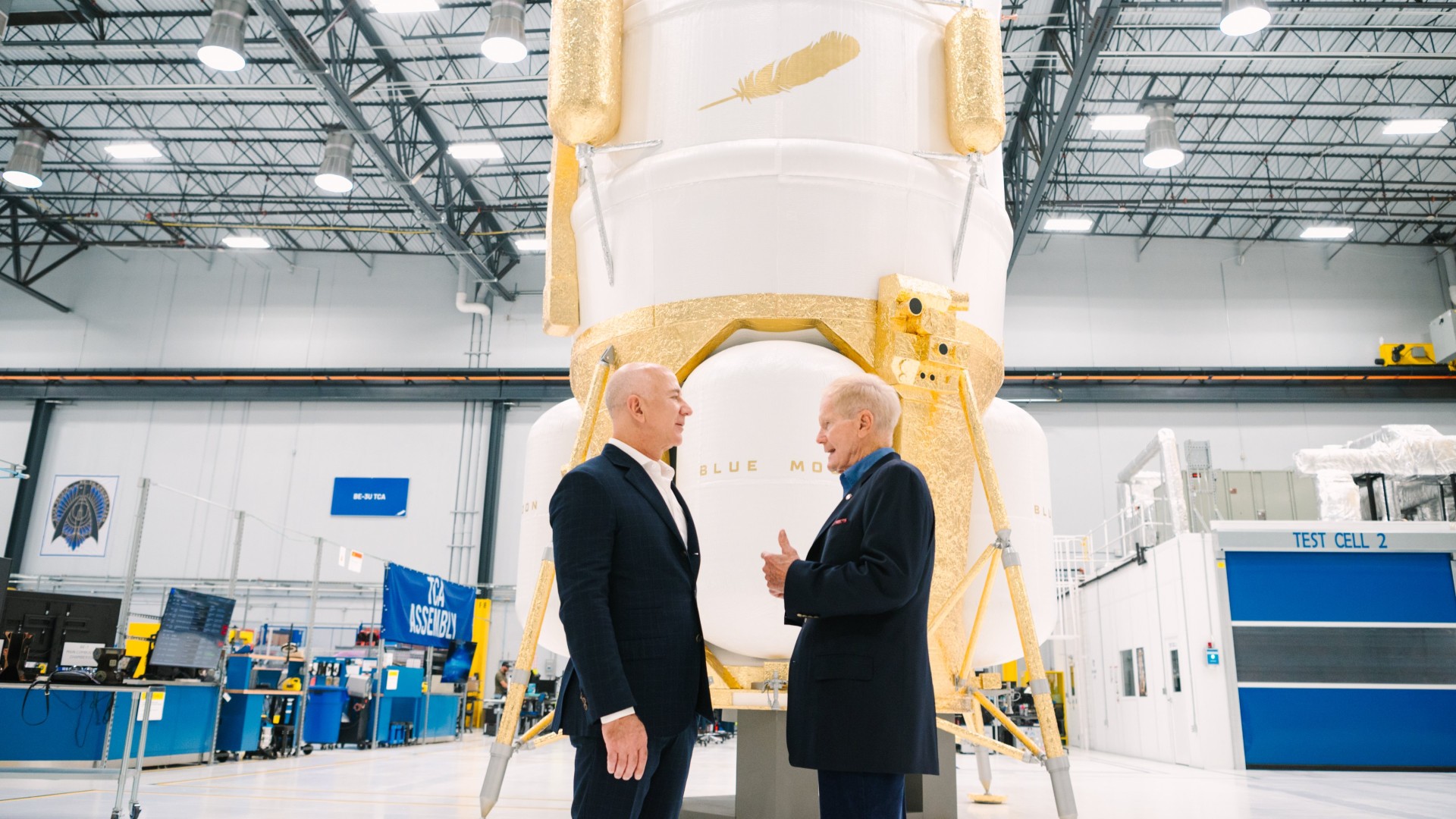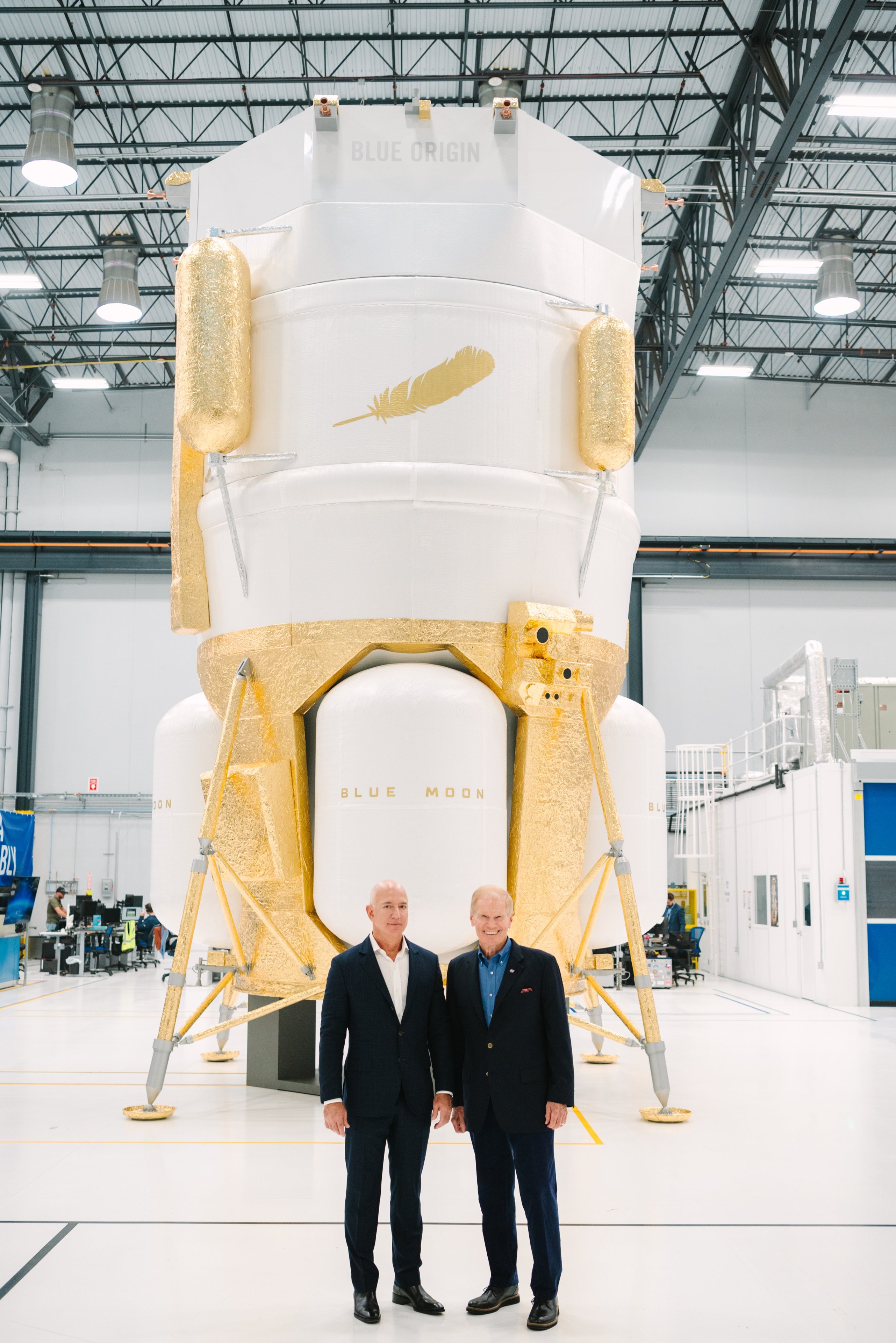Blue Origin shows off moon lander prototype for NASA's Artemis program
However, Blue Origin has not yet stated a target launch date for the lander, dubbed Blue Moon Mark 1.

Blue Origin recently showed off one of the prototypes it's building to help return humans to the moon as part of NASA's Artemis Program.
NASA administrator Bill Nelson shared pictures of the company's Blue Moon Mark 1 lunar lander design during a tour of a Blue Origin facility in Alabama. The lander is intended to deliver up to 3 tons (2.7 metric tons) of cargo to the moon.
"Impressive visit to the Blue Origin Huntsville Engine Production Facility! NASA is proud to partner with Blue Origin, especially on the Blue Moon human landing system, which will help ensure a steady cadence of astronauts on the moon to live and work before we venture to Mars," Nelson wrote in a post on social media site X (formerly Twitter) alongside the images on Oct. 27.
Blue Origin has not stated a target launch date for the Blue Moon Mark 1 lander.
Related: Blue Moon lunar lander: Facts about Jeff Bezos' spacecraft
Blue Origin's current Mark 1 design is far different from previous iterations the company has showed off, looking leaner and taller than was depicted in the company's original renderings.

In May 2023, NASA selected Blue Origin to build a separate lunar lander, the Mark 2. If all goes according to plan, Mark 2 will be the second Human Landing System (HLS) to return humans to the lunar surface during the agency's Artemis program. The lander is slated to be used during the Artemis 5 mission, which will launch no earlier than 2029 according to current timelines. Blue Origin is developing the reusable New Glenn rocket to launch its Blue Moon landers.
Get the Space.com Newsletter
Breaking space news, the latest updates on rocket launches, skywatching events and more!
With a $3.4 billion award given to Blue Origin for developing Mark 2, NASA aims to ensure there's a second way to land astronauts on the moon. The first way, chosen in 2021, is SpaceX's reusable Starship vehicle, which NASA hopes will be able to ferry astronauts to and from the lunar surface during Artemis 3 and 4, currently scheduled for 2025 and 2028, respectively.
Blue Origin is also one of many companies participating in NASA's Commercial Lunar Payload Services program that aims to send privately-developed technologies to the moon for scientific study and lay the groundwork for crewed visits to the moon, starting with Artemis 3.
Join our Space Forums to keep talking space on the latest missions, night sky and more! And if you have a news tip, correction or comment, let us know at: community@space.com.

Brett is curious about emerging aerospace technologies, alternative launch concepts, military space developments and uncrewed aircraft systems. Brett's work has appeared on Scientific American, The War Zone, Popular Science, the History Channel, Science Discovery and more. Brett has English degrees from Clemson University and the University of North Carolina at Charlotte. In his free time, Brett enjoys skywatching throughout the dark skies of the Appalachian mountains.









